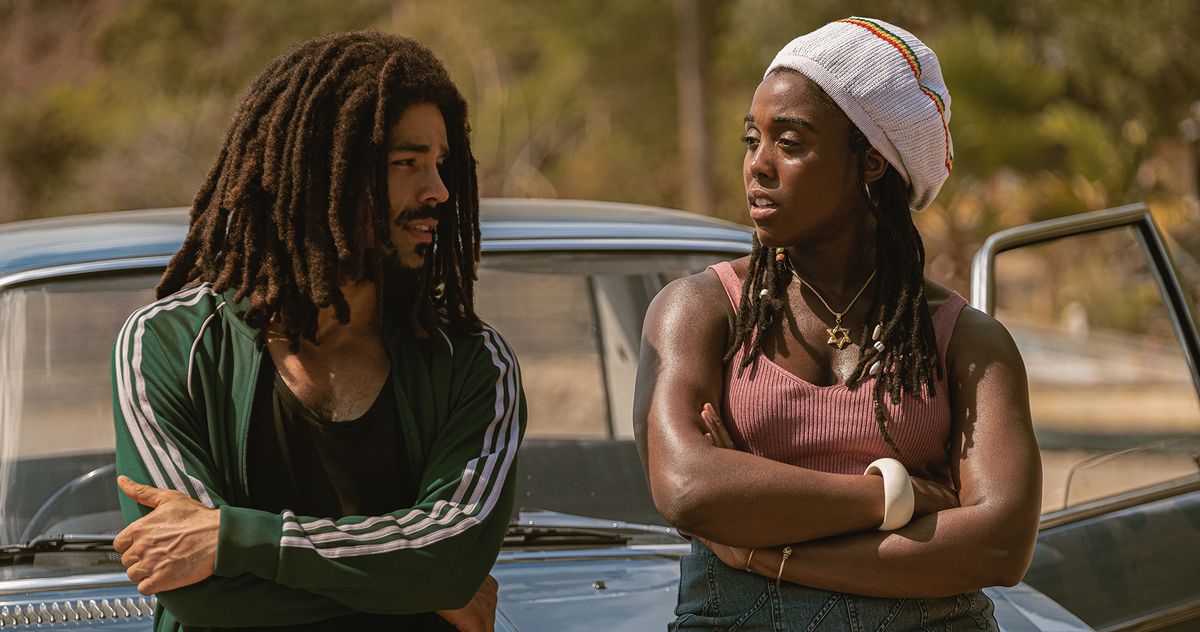
Movie Review: Navy Fliers test limits of “Devotion” overKorea



The first thing that pops out of “Devotion,” the new Korean War Naval aviators action biopic, is how far digitall- animated aircraft and aerial combat have come since the first films to lean heavily on that technology — “Flyboys” and “Red Tails.”
This is another big step beyond “Midway,” as in-flight/in-cockpit real plane/digital plane footage is seamlessly integrated to create moments that are impressively realistic. I’d say the digital Jeeps in the film are more obviously animated than the F8F Bearcats and F4U Corsairs depicted here.
Director J.D. Dillard’s film, “inspired by” the “true story” of Jesse L. Brown, a color-barrier-breaking pilot for the U.S. Navy, may be a straight up B-movie, from its lesser known cast to story beats that flirt with war movie tropes and over-the-top hokum. But it sure looks like an A-picture.
Jonathan Majors of “Lovecraft Country” and “Da Five Bloods” plays Brown, whom we meet when a new Annapolis grad, Lt. Tom Hudner (Glen Powell of “Top Gun: Maverick” and “Hidden Figures”), checks in to their Rhode Island Naval Air station in 1950.
Ensign Brown is the lone African American pilot with the squadron, a man who makes it a point to be the last out of the locker room before training missions. He stares into the bathroom mirror and repeats racial slurs and insults to his skills, intelligence and lineage, just to get his game face on.
Hudner is assigned as his wingman, and seems at ease with supporting role, despite Brown’s standoffishness and a hint of “colored pilot” prejudice from their fellow pilots.
In the movie’s version of this first Black Naval combat aviator story, one has to go the Marines to find the bigger bigots.
The Ensign tests his new wingman, and declines to get friendly. At first. It takes a while in such movies for the touchy Black man to trust the entitled white one, and a little longer before Hudner meets Brown’s wife (Christina Jackson) and little girl.
There’s an earnestness of intent here that kind-of/sort-of wins you over. When your picture’s as pokey as this one, wearing you down is a part of the bargain. You’ve got the time.
Cold War headlines give us a taste of the tensions of the day — Soviet acquisition of the atomic bomb, communist aggression, reconnaissance plane shoot-down — with our Navy pilots moving up to the much heavier “big nosed” FU4 fighter-bomber, learning to land them on their assigned carrier, the U.S.S. Leyte before deploying overseas.
The film takes us through 1950’s run up to The Korean War, sampling the rules of engagement and the fraught early missions, into the winter of the Chosin Reservoir battle.
But before that, there are more bonding experiences — shore leave at Cannes, invited to the casino by then-eighteen-year-old Elizabeth Taylor (Serinda Swan), no less, and a bar fight.
Through it all Hudner learns bits and pieces of what a struggle Brown has endured, how it has scarred him so that he can’t be sure he can even trust the landing signal officer on a carrier, fearing a racist waving those flags might direct him into a crash that will kill him.
Hudner is sure accidents happen due to carelessness. “Do what you’re told and you won’t get killed.” Brown opens his eyes to the realities of segregated America and its barely-integrated military.
“You can’t always do what you’re told.”
The screenplay doesn’t go much beneath the surface of either character, which in Brown’s case seriously limits the scope and emotional depth of the film. The odd touching moment seems to land almost in spite of itself, with Majors’ performance veering between his loner “squadron of one” hostility and mistrust, and quick tears at the different expectations and rules he has live by.
Powell’s getting labeled “handsome” in too many films for his own good. We still haven’t seen what he can do when bigger demands are put on him.
Including how the African American sailors on board the Leyte root for and revere Brown like he’s “Jackie Robinson about to steal home” is probably accurate, but handled in the same chilly way as other big emotional payoffs here are.
Once you’ve decided to include scenes with the potential to be maudlin, stopping well short of a big, obvious tug at the heartstrings is something you do at your own peril.
The script so flattens out the trials of Brown and the “Devotion” of these two for one another that we find ourselves thinking, “Well, I guess we have to take their word for it.” But whatever the closing credits tell us, that’s the missing heart of this promising B-movie, a tipping point it never quite crosses.

Rating: PG-13 for strong language, some war action/violence, and smoking.
Cast: Jonathan Majors, Glen Powell, Christina Jackson, Thomas Sadoski, Serinda Swan and Joseph Cross
Credits: Directed by J.D. Dillard, scripted by Jake Krane and Jonathan Stewart, based on a book by Adam Makos. A Sony/Columbia release.
Running time: 2:18



















































































